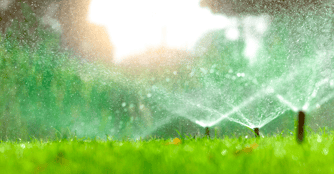Among the wide variety of factors that influence whether a water savings program is successful, a few themes stand out as best practices. According to the ACEEE report “Saving Watts to Save Drops: Inclusion of Water Efficiency in Energy Efficiency Programs,” these four areas are key to determining a program’s viability.
Policy drivers
The bulk of water savings in the programs ACEEE reported on came from residential efficiency efforts. The reason? Savings from simple measures, such as low-flow showerheads, aerators and efficient dishwashers and washing machines, tend to be listed in state technical reference manuals (TRMs). The water and energy savings associated with these measures have formulaic calculations that are relatively easy to assess. Western states and others with a sensitivity to drought or increasing competition for water resources were more motivated by specific water conservation goals than other regions where water is more plentiful. In essence, fear of drought was an excellent driver of energy utility efforts to claim water savings.
 Assessing the true cost of water
Assessing the true cost of water
Water is a tricky business: Something so transparent can be rather cloudy when it comes to determining its true cost. Because of subsidies, water’s value is often not reflected in customers’ rates. Nor are the energy costs associated with treating and transporting water. When rates are kept artificially low, it disincentivizes customers to use water efficiently. It also complicates a utility’s ability to recover of the actual costs of providing and treating water. It becomes a self-perpetuating cycle, with utilities struggling to generate the revenue—and justification—they need to implement water- and energy-saving technologies.
Joint energy-water program collaboration
Efforts for collaboration between energy and water utilities were varied in degree and intensity, but any collaboration worked better than none. Collaboration attempts ran the gamut from informal communication, coordination on planning studies and more dynamic joint administration of water-energy programs.
According to the ACEEE report, “combined energy and water utilities like the Los Angeles Department of Water and Power (LADWP) offer some of the most robust and streamlined examples of tandem energy and water efficiency programs.”
Something to consider: Create an efficient one-stop shop for customers even if you are a collaboration of two distinct utilities. The report says, “The agreement helps overcome a number of administrative barriers by identifying one of the utilities as the lead and the other as the partner for each program. Program orders identify the roles and responsibilities of each utility, provide project contacts and an amendment process, and establish project cost and invoicing procedures.”
Not just inter-utility but partnerships with other industries can be surprisingly effective for water and energy savings. Because of the enormous amount of water used by the agricultural industry, partnerships with farming operations have shown they are opportunities to generate significant savings.
Calculating cost-effectiveness
The ACEEE report’s review of programs demonstrated there are myriad ways that embedded water-energy  savings can be claimed. At times they can seem somewhat vague, as in Oregon’s cost-effectiveness policy, which calls for utilities to “calculate cost savings and other non- energy benefits if they are significant and there is a reasonable and practical way for calculating them.”
savings can be claimed. At times they can seem somewhat vague, as in Oregon’s cost-effectiveness policy, which calls for utilities to “calculate cost savings and other non- energy benefits if they are significant and there is a reasonable and practical way for calculating them.”
Others are more specific: The report states “a number of states’ TRMs include deemed unit savings for annual gallons of water saved for certain energy efficiency measures. This enables program administrators to calculate dollar values of avoided costs within cost–benefit screening.”
Other TRMs include water impact algorithms for a wide range of commercial, industrial and residential measures. The California Water-Energy (WEN) Calculator and Avoided Water Capacity Cost Model, one of the more sophisticated calculators, goes into explicit detail with an Excel workbook of 29 worksheets. The model, according to the report, “prompts users to input systemwide as well as measure-specific information, including annual water savings, measure life, hydrologic region, and end-use sector (urban or agricultural).”
All of these practices are important, but they are all works in progress. There’s much more work to be done to integrate the full energy intensity—and price—of water into energy efficiency portfolios. Once that recognition is in place, it will inform the claimed savings, incentives and funding toward water-energy programs.
Discover AM Conservation Group's water-saving products and how they can improve your utility's programs!






